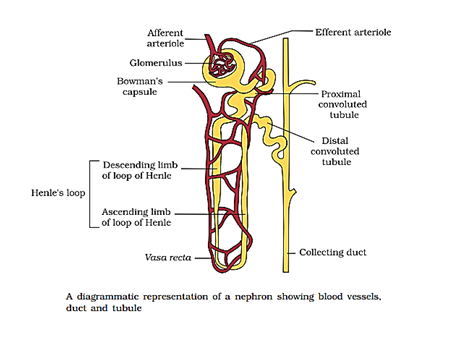

In each kidney there are ……
a) million nephrons
b) thousands nephrons
c) hundreds nephrons
d) billions nephrons

Glomerulus and bowman’s capsule are parts of
a) renal corpuscle
b) renal cortex
c) tubules
d) pelvis
The cone shaped areas in renal medulla is called………..
a) renal pyramids
b) renal cortex
c) capillaries
d) arteries
Urine formation completed in……… steps.
a) two
b) three
c) four
d) five
Mechanism of Urine Formation. The mechanism of urine formation involves the following steps:
Glomerular Filtration:
Glomerular filtration occurs in the glomerulus where blood is filtered. This process occurs across the three layers- epithelium of Bowman’s capsule, endothelium of glomerular blood vessels, and a membrane between these two layers.
Blood is filtered in such a way that all the constituents of the plasma reach the Bowman’s capsule, except proteins. Therefore, this process is known as ultrafiltration.
Reabsorption:
Around 99 percent of the filtrate obtained is reabsorbed by the renal tubules. This is known as reabsorption. This is achieved by active and passive transport.
Secretion:
The next step in urine formation is the tubular secretion. Here, tubular cells secrete substances like hydrogen ion, potassium ion, etc into the filtrate. By this process, the ionic, acid-base and the balance of other body fluids are maintained. The secreted ions combine with the filtrate and form urine. The urine passes out of the nephron tubule into a collecting duct.
Which of the following artery carries blood to kidney?
a) hepatic artery
b) pulmonary artery
c) renal artery
d) femoral artery
The glomerulus is made of many …..
a) arteries
b) arterioles
c) capillaries
d) all of these